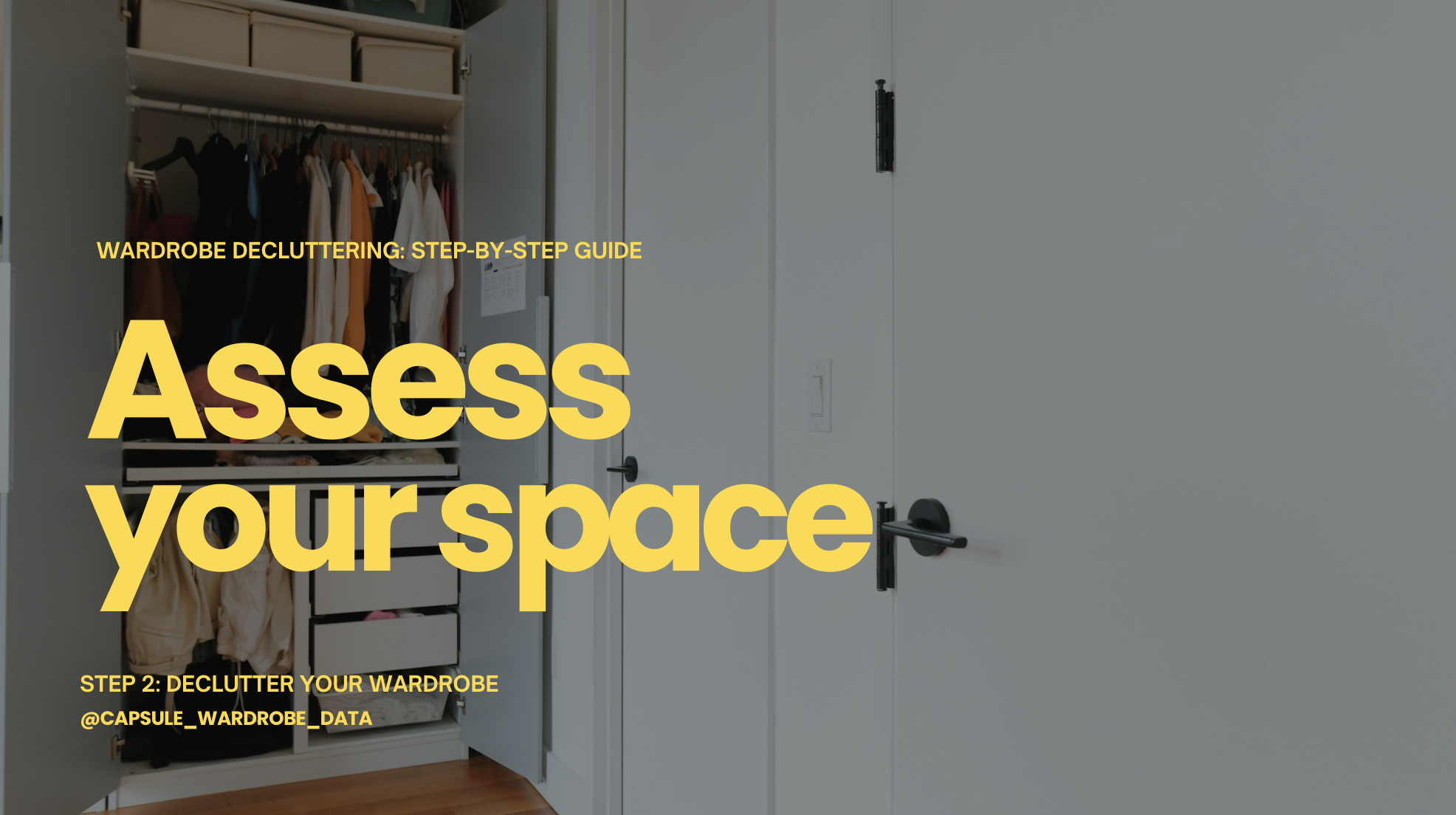In the first step of this series we learned how to create personal uniforms and a customized personal uniform ‘cheat sheet’ to reference. Now, it’s time to declutter your wardrobe!
Before we begin removing items from your wardrobe, it’s important to assess and document the “before”. Assessing the closet space available for storing your wardrobe, shoes, and accessories will help you understand the limitations and possibilities of your storage area. It can also be motivating to compare your “before” and “after” to help you maintain a minimal wardrobe going forward.
Assessing storage space will bring a more realistic approach to decluttering, so you only retain personal uniform pieces that fit in your space.
Think of it like you’re preparing for a weekend trip and can only bring a specific amount of luggage. You’d want to know exactly how much space you have to pack to determine how much clothing you can bring. Instead of a suitcase, we’re working with the closet and drawers you have today.
Set a timer for 15 minutes and try to complete all the steps before the alarm goes off.
Step 1:
Take photos of all the places where you store clothing, shoes, and accessories today. Don’t tidy up before doing this, remember these are the ‘before’ pictures.
Step 2:
Take note of which places are suitable and unsuitable to store your wardrobe. Suitable places to store wardrobe items would be bedroom closets and drawers or hallway closets for outerwear. Unsuitable places to store your wardrobe would be your oven. This may sound unusual, but in some places like New York City, apartments are so small that some people actually store clothing there.
Suitable:
Everyday clothes in wardrobe or dresser
Everyday shoes, coats, and bags in front closet
Seasonal or occasion clothes in bedroom closet
Unsuitable:
Stools, tables, or chairs
The floor
The oven
Step 3:
Assess how much clothing could realistically be stored in the spaces you tagged as ‘suitable’. I know there are hacks to cram more clothing and shoes into tight spaces, but I’ve found those strategies make it harder to see what you have and put items away. Our goal is to make it as easy as possible to get what you need and put things away.
I recommend documenting how much clothing can be stored in each location to understand about how many pieces you can realistically store. You can duplicate this template here.
You can establish effective storage systems and routines that promote order and accessibility by tailoring your decluttering efforts to fit the available storage space.
Your wardrobe is more likely to remain tidy and functional in the long term, reducing the likelihood of clutter accumulation and making it easier to find and retrieve items when needed.
Coming up next:
How much clothing do you need?
Unlock a clutter-free closet!
Subscribe to my newsletter to stay up-to-date with this Wardrobe Decluttering series, exclusive wardrobe trivia, and related projects.





















